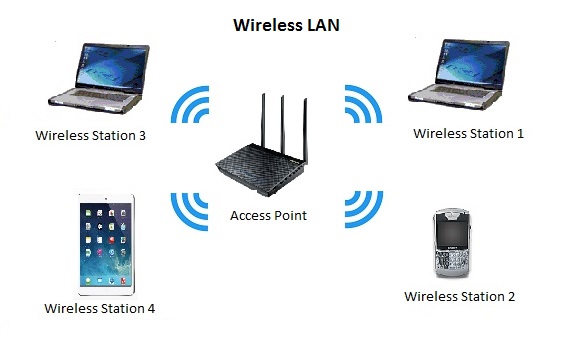What is WLAN ?
WLAN is a terminology used commonly in Enterprise companies when referring to wireless internet access. Lets see in detail what is WLAN and how it originated.
Computers were developed by scientists from around 1940s and worlds first computer science degree course was started in 1953 at University of Cambridge. Computers need to talk to other computers; there should be a path for movement of electrons. For many years we were using Ethernet cable / fibre optic cable / coaxial cable connecting one machine to another machine – a group of computers connected together was called as Local Area Network (LAN).
In 1985 USA FCC released ISM (Industry Scientific & Medicine) wireless frequency band for unlicensed use. In 1991 a different form of unlicensed wireless connectivity was invented to transfer data between machines. This was standardized by IEEE 802 11th working group in 1997. The speed supported was about 1 or 2 Mbps. Of course, it was an extension of LAN but without any cables connected. Hence the name evolved as Wireless Local Area Network (WLAN), hardly supporting few machines.
From 1999 WLAN technology started evolving very rapidly. Every year the speed increased: from 2 Mbps to 11 Mbps to 54 Mbps to 300 Mbps to 600 Mbps to 1733 Mbps to now in 2018 up to 20 Gbps. Computer data processing power also increased rapidly alongside.
So what is WLAN ?
In simple terms, a group of computers connected wirelessly for communicating with each other is called WLAN. You may need an access point (AP) as a portal device (to connect with your wired network backbone) which has one or more radios continuously broadcasting a network name called Service Set Identifier (SSID). Each computer terminal should have wireless radios which can listen to these broadcasted SSIDs . 100s of computers can be synchronized with a single access point and we call it has simple WLAN.

Multiple access points connected to wired / wireless backbone with similar structure can form a large enterprises network. In such large networks the APs are controlled by a centralized WLAN controller. These days access points come in multiple form factors like mobile hotspots, tethering, 3G hotspot offloading devices, wireless modem routers, repeaters, bridges, Ad-hoc networks (group of computers formed a network without any AP), etc., but everything works in a similar manner with basic principles of WLAN (IEEE 802.11 network). General public / non-techies commonly refer WLAN signals as Wi-Fi. The difference between WLAN and WiFi is discussed in a separate blog.
